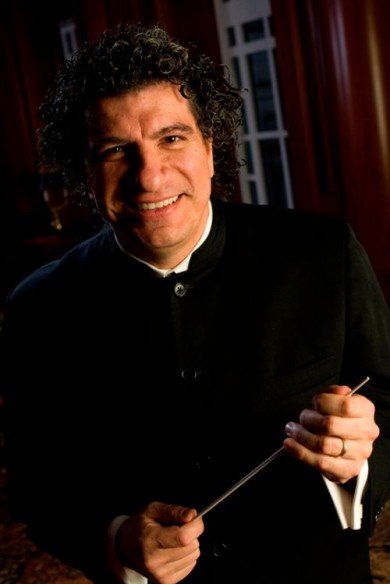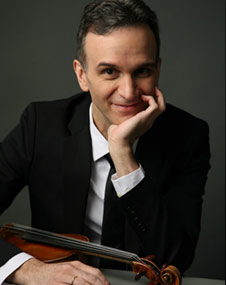Guerrero leads Cleveland Orchestra in searing Shostakovich
Police in riot gear stood along the streets of downtown Miami, as concertgoers walked toward the Arsht Center for a Cleveland Orchestra performance that would, aptly, include one of the most politically charged works of the 20th century.
Hundreds of demonstrators marched to the city’s Bayfront Park to protest the election of Donald Trump, as the orchestra prepared to play Shostakovich’s Symphony No. 5, a work composed during Stalin’s Great Terror of the late 1930s. As the police blocked off streets to clear the way for the peaceful protesters, it was impossible to not consider the contrast with life in the Soviet Union at the time of the symphony’s premiere, when a chance remark against the Communist authorities could result in deportation to a labor camp or worse.
From the dramatic opening thrust of the first movement, this was a weighted, epic performance. Led by conductor Giancarlo Guerrero, the orchestra played the opening Moderato in an unhurried, concentrated manner, with no moments of drama or intimacy whiffed over. The cool intensity of the string melodies over pulsing accompaniments was made more searing by the orchestra’s knife-edge precision. Guerrero led a masterful buildup in volume and intensity to the great climax high in the violins, with shattering clusters of dissonant chords in the brass.
Less successful was the quick Allegretto. Although technically well-played, it came off as too straight, lacking the sarcastic edge that marks Shostakovich in his manic moods.
There are times you can sense an audience’s involvement in a performance, in the rapt silence and forward-leaning posture of many listeners, as it to help catch every note, and the stirring performance of the Largo was one of these. The hushed string tones of the grave opening filled the hall, despite the pianissimo volume. Clarinet and oboe ascended in bleak, lonely melodies over long-held string notes. The performance had to be halted for a couple of minutes, as a woman collapsed by the exit door to the right of the stage and ushers rushed to assist. But Guerrero resumed the movement and led the orchestra through a gripping, despairing climax.
The last movement had much of the manic flavor that the Allegretto lacked, as Guerrero led the orchestra through moments that jerked from peaceful and comforting to frenzied and energetic. Much has been written about whether the symphony’s noisy trumpet-topped ending represents real triumph of light over darkness, in the manner of Beethoven’s Fifth and Ninth symphonies, or a portrayal of the sort of forced, totalitarian cheers to be found at the Congress of People’s Deputies. Guerrero appeared to favor the latter, having the strings saw away at their repeated notes in a grinding, rote manner that gave an effective grimness to the work’s final moments.
Also on the program was another of the 20th century’s most popular concert works, Samuel Barber’s Violin Concerto, with soloist Gil Shaham. Shaham’s smooth style, his clean playing and effortless technical mastery, proved a perfect match for the concerto’s pristine, classical grace.
He played the opening melody in a more assertive manner than many, blowing off some of the cloying sweetness that can attend it. He leaned in toward the violin section, intensifying his tone as the harmonies acquired a tang of dissonance. As the violin part grew darker, his tone grew more robust but never rough, which would not have fitted the sensibility of the concerto.
The second movement’s spare orchestration creates unique textures, as piano and brief bursts of brass accompany the solo violin. Shaham made the most of this, his intense tone on the instrument’s highest string creating a ray of intense light against the darkness of the brass. As he ascended from the bottom to the top of the instrument’s range, his tones ranged from searing to rhapsodic, bringing out the movement’s pain and joy.
The last movement has been criticized by some –including the violinist for whom the work was originally written–as too lightweight. But whether or not that complaint ever had merit, the movement in this performance came off as a bracing release of energy, as Shaham’s bow and left hand raced through the almost impossibly fast music in the fearless, headlong style of a man running along the edge of cliff but never falling off.
The concert opened with Berlioz’s Roman Carnival Overture, well played but lacking the final jolt of dynamism to really put it over.
The program will be repeated 8 p.m. Saturday at the Arsht Center. clevelandorchestramiami.com; 305-949-6722
Posted in Performances
Leave a Comment
Sat Nov 12, 2016
at 1:41 pm
No Comments








